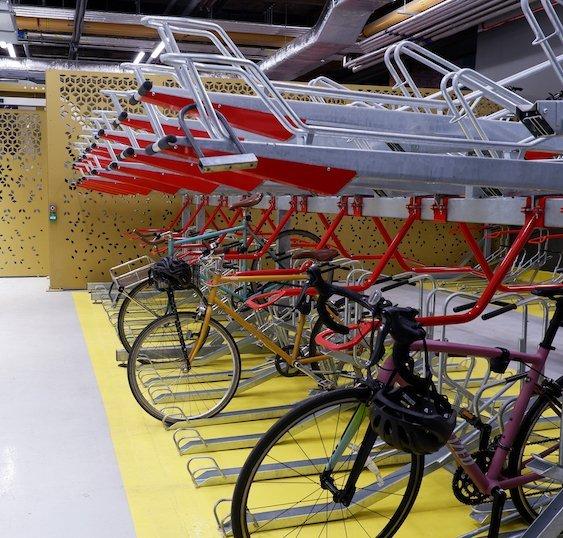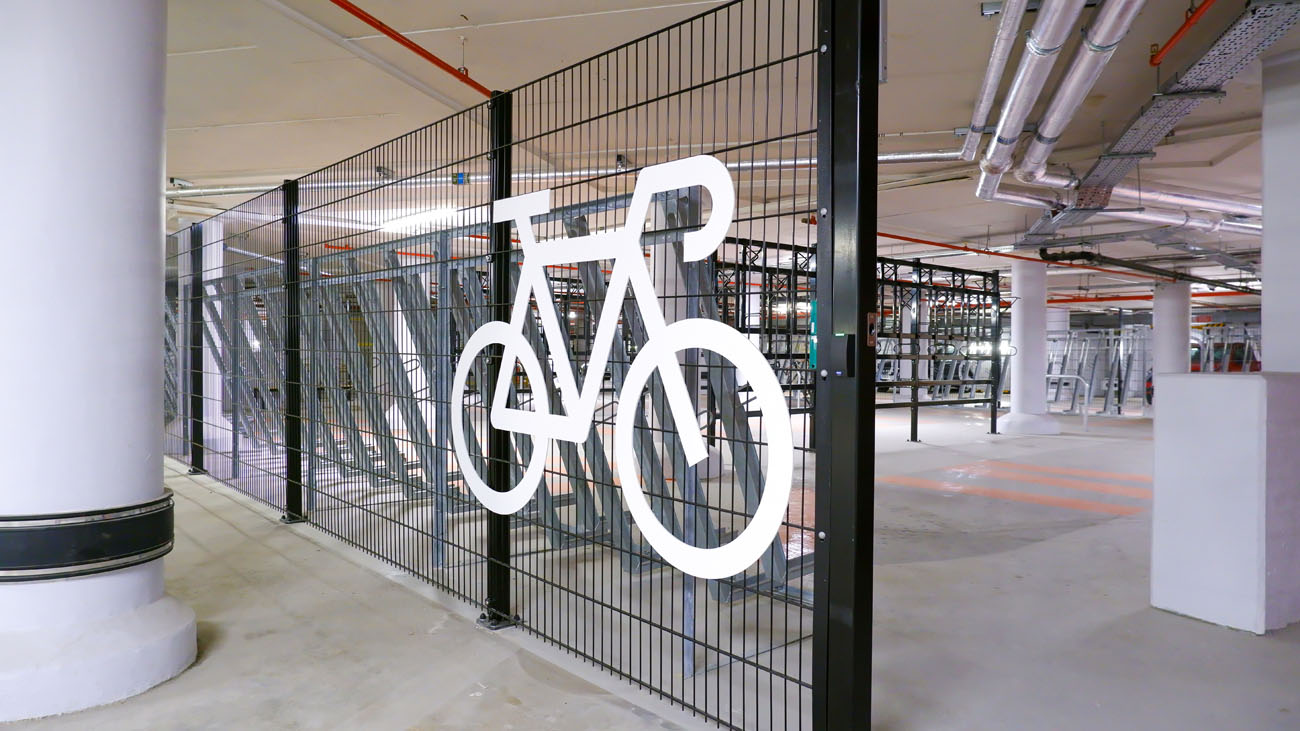Two-tier racks, Sheffield stands, semi-vertical, wall mounted, the list goes on. Designing and planning cycle parking means knowing the difference between bike racks, and the right situations to implement different designs.
Remember, one size does not fit all. To get the best results out of your project you should focus on providing cyclists with the right user-friendly storage, that throughout the whole store will provide parking for all bike types, while still maximising your building’s capacity and designing a solution for the future.
Turvec act as consultants during the design process, helping you specify and implement the right parking solution. Never hesitate to get in touch and talk to our responsive team, but for now, here’s a short guide on the basic need-to-knows of cycle parking racks and stands.
1. Stands vs Racks
The terms are used interchangeably, but there is in fact a difference between bike parking racks and stands.
We think the best way to distinguish is that racks hold multiple bikes in a racking system, whereas a stand is a freestanding unit designed to store just one or two bicycles.
The best example of a stand is the traditional Sheffield hoop. It’s a bike parking staple and the most widely used in the UK. Multiple locking points and suitability for almost every bike make them an important consideration for any cycle parking facility.
Yet Sheffield stands are not a space-efficient method of parking a bike, and if creating an efficient capacity of bikes is important, then vertical, semi-vertical and two-tier racks should be considered.
2. Spacing and dimensions
For your racks and stands to work effectively, they will need to be correctly spaced. For example, it’s all well and good including two-tier racks, but only if there’s safe, cyclist-friendly clearance to park bicycles.
Internationally, there are various guidelines available that provide best practice for bike parking. The best UK example is found in chapter 8 of the London Cycling Design Standards.
For further information about cycle parking dimensions, visit this page, or discover more about international standards here.
3. Different solutions for different cyclists
When it comes to choosing bike racks, identifying the dimensions you’re working within and the number of spaces you need to provide will ultimately determine which rack you install.
You may find that based on space availability and number of spaces, that you’ll need two-tier, semi-vertical or vertical racks to meet those requirements, but bear in mind that you will also need to provide Sheffield stands or accessible parking to account for non-standard bicycles.
Ensure firstly that these systems are safe to use, correctly spaced, and that a correctly pressurised gas-strut is always installed for two-tier racks.
Providing Sheffield stands within your bike parking store means those who are unable to lift their bike, and cargo bike and recumbent bike users will always have somewhere to park. Consider reserving the required spaces for disabled users to ensure they’re correctly used.
4. Do I need a two-tier rack?
Two-tier bike racks are designed to fully maximise bike storage space. Just one look at Dutch facilities shows the scope of these systems.
However, that does not mean they should be installed at every project. Firstly, you’ll need the correct ceiling height and loading clearance.
Even then, unless your capacity demands it, you should consider instead designing your project with a variety of rack options. That way, you can still ensure your capacity is future-proofed while ensuring your cycle parking is usable for all cyclists.
5. Preparing for e-mobility
E-bikes and e-scooters aren’t just on the way, they’re already here. More people each month are buying e-bikes, with e-scooter legislation likely to allow for increased private use.
How can you ensure your cycle parking is ready? You can consider including e-bike charging points. Whether that’s integrated within your two-tier rack, or with dedicated e-bike charging units, e-bike users will be able to charge their batteries.
E-bike charging points should always be as appropriate as possible to current demand. While they are popular, it is still easy to oversupply e-bike charging units.
It’s worth bearing in mind that in general e-bikes tend to be more expensive than regular bicycles. Therefore, if you haven’t already, ensure your parking solution is sufficiently secure and that you always provide bike parking racks that allow every bike to be locked correctly.
For responsive, industry leading cycle parking design guidance, do not hesitate to contact us here.





